Unlocking the Power of ArchiMate Viewpoints in Enterprise Architecture: Enhancing Clarity, Relevance, and Alignment
Introduction
ArchiMate viewpoints are a critical concept within the ArchiMate modeling language, which is designed to help organizations describe, analyze, and visualize their enterprise architecture. Viewpoints in ArchiMate provide a way to focus on specific aspects or concerns of the architecture, making it easier to communicate complex information to different stakeholders. Here’s a more detailed explanation of ArchiMate viewpoints and how to use them:
What Are ArchiMate Viewpoints?
ArchiMate viewpoints are essentially predefined perspectives or templates for creating architectural models. Each viewpoint is tailored to address specific concerns, interests, or goals of different stakeholders involved in enterprise architecture. These viewpoints offer a standardized way of representing architectural information, which enhances communication and understanding across various teams and roles.
Why Use ArchiMate Viewpoints?
- Clarity: Viewpoints help bring clarity to complex architectural models by focusing on specific aspects of the architecture. This makes it easier for stakeholders to understand and engage with the information.
- Relevance: Different stakeholders have different concerns and interests in an organization’s architecture. Viewpoints allow you to provide relevant information to specific stakeholders, avoiding overwhelming them with irrelevant details.
- Alignment: Viewpoints can be used to ensure that the architecture aligns with the strategic goals and objectives of the organization. They help bridge the gap between high-level strategy and detailed implementation.
- Consistency: By using predefined viewpoints, you ensure consistency in the way architectural information is represented across the organization. This consistency makes it easier to compare and analyze different parts of the architecture.
Common ArchiMate Viewpoints:
ArchiMate defines several standard viewpoints, including but not limited to:
-
Business Process Cooperation Viewpoint: The business process cooperation viewpoint is used to show the relationships of one or more business processes with each other and/or with their environment. It can be used both to create a high-level design of business processes within their context and to provide an operational manager responsible for one or more such processes with insight into their dependencies. Important aspects of business process cooperation are:
- Causal relationships between the main business processes of the enterprise
- Mapping of business processes onto business functions
- Realization of services by business processes
- Use of shared data
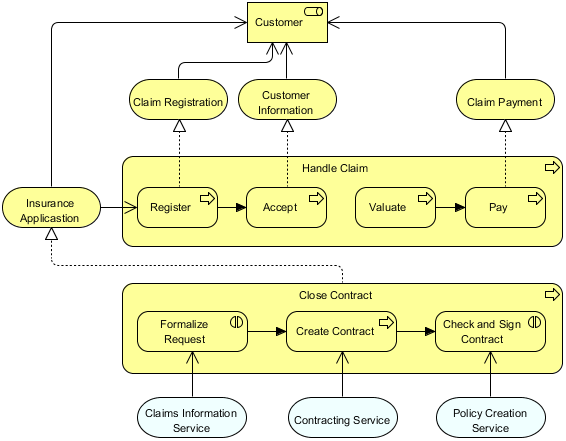
- Application Cooperation Viewpoint: The application cooperation viewpoint describes the relationships between applications components in terms of the information flows between them, or in terms of the services they offer and use. This viewpoint is typically used to create an overview of the application landscape of an organization. This viewpoint is also used to express the (internal) cooperation or orchestration of services that together support the execution of a business process.
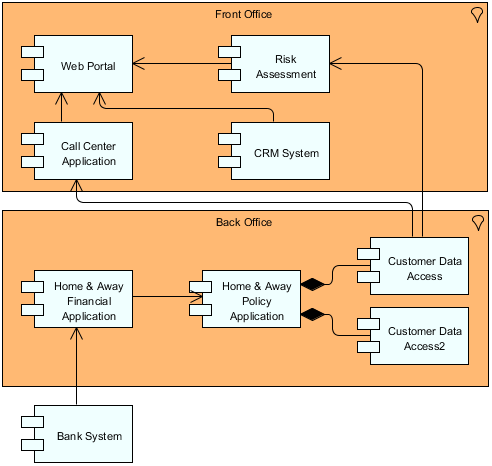
- Information Structure Viewpoint: The information structure viewpoint is comparable to the traditional information models created in the development of almost any information system. It shows the structure of the information used in the enterprise or in a specific business process or application, in terms of data types or (object-oriented) class structures. Furthermore, it may show how the information at the business level is represented at the application level in the form of the data structures used there, and how these are then mapped onto the underlying technology infrastructure; e.g., by means of a database schema.
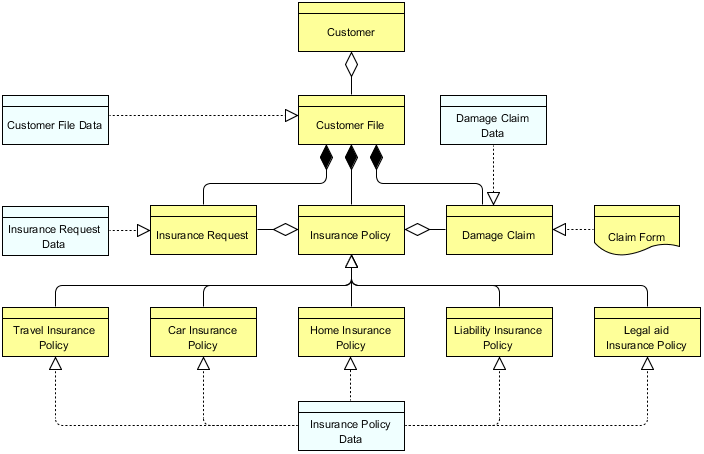
- Technology Infrastructure Viewpoint: The technology usage viewpoint shows how applications are supported by the software and hardware technology: the technology services are delivered by the devices; system software and networks are provided to the applications. This viewpoint plays an important role in the analysis of performance and scalability, since it relates the physical infrastructure to the logical world of applications. It is very useful in determining the performance and quality requirements on the infrastructure based on the demands of the various applications that use it.
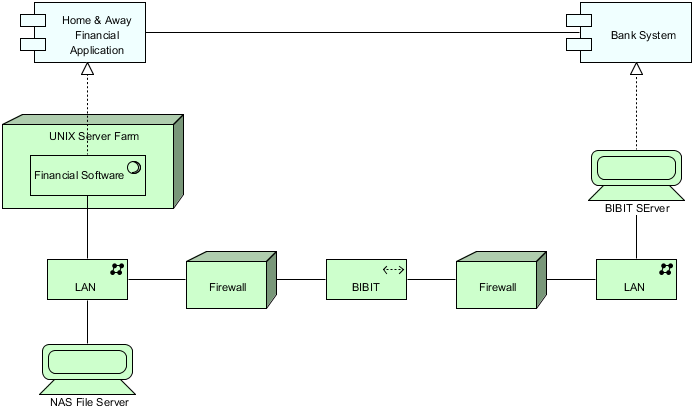
- Motivation Viewpoint: The motivation viewpoint allows the designer or analyst to model the motivation aspect, without focusing on certain elements within this aspect. For example, this viewpoint can be used to present a complete or partial overview of the motivation aspect by relating stakeholders, their primary goals, the principles that are applied, and the main requirements on services, processes, applications, and objects.
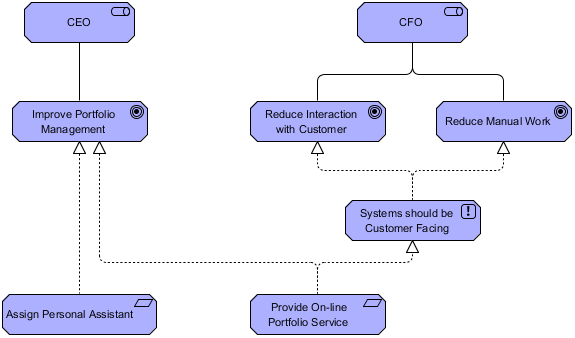
When to Use ArchiMate Viewpoints:
Use ArchiMate viewpoints when:
You need to communicate architectural information to specific stakeholders.
You want to focus on a particular aspect of the architecture (e.g., business processes, data, technology).
You want to ensure alignment between different architectural elements and the organization’s goals.
You need to maintain consistency in the way architectural information is represented and analyzed.
How to Use ArchiMate Viewpoints:
When using ArchiMate viewpoints, follow these steps:
- Identify the relevant stakeholders and their concerns.
- Select the appropriate viewpoints that address those concerns.
- Create or modify your architectural models using the selected viewpoints.
- Use these models to communicate with stakeholders, make informed decisions, and ensure alignment with organizational goals.
Summary
ArchiMate viewpoints are a powerful tool in enterprise architecture that help tailor architectural models to the needs of different stakeholders. They promote clarity, relevance, alignment, and consistency in representing and communicating architectural information. Selecting and using the right viewpoints is essential for effective enterprise architecture management and communication.

